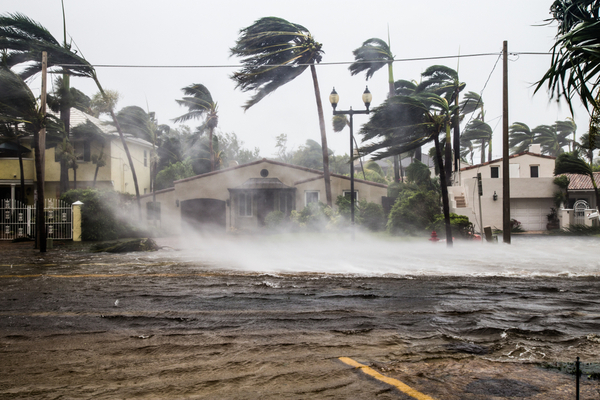Atlantic hurricane season is usually still slow in July, but there is a slight uptick in activity and the areas of potential development begin to expand farther east into the Atlantic Ocean. Major hurricanes – Category 3 or stronger on the Saffir-Simpson Hurricane Wind Scale – in July are rare. Since 1950, only four major hurricanes have flared up during the hurricane season’s second month. Instead, July is considered “a month of transition” during the season.
According to the National Oceanic and Atmospheric Administration (NOAA)’s Hurrican Research Division, July has accounted for only 7% of the Atlantic hurricane season’s named storms since 1851 . That pales in comparison to the percentage of named storms that have formed in the busiest months of hurricane season: August (22%), September (35%) and October (21%). From 1851 through 2020, 133 named storms formed in July, averaging about one named storm in July each year. Incidentally, the Atlantic season’s first named storm will have formed by the second week of July in a typical season. Of those named storms, 61 strengthened to hurricanes – an average of one July hurricane every other year. July 2018 was unusual since both Beryl and Chris formed into hurricanes during the month. That marked the first time since 2008 that the Atlantic had a pair of July hurricanes.
During this transition month, formation areas spread eastward to include more of the Atlantic Ocean to the east of the Lesser Antilles. Tropical waves, one of the seeds for tropical storm development, become a bit better defined in July. That’s one reason we begin to look farther east in the second month of hurricane season.
The Gulf of Mexico remains somewhat active in July, though the western Caribbean Sea steps down a bit as cold fronts become far less frequent. Clusters of summertime thunderstorms can sometimes become tropical systems as they ride eastward off the coast of the Carolinas or mid-Atlantic. Development can also occur from north of Hispaniola to north of the Bahamas. Those storms can either linger off the East Coast and churn up high surf that causes beach erosion and rip currents, curl or recurve harmlessly out into the open Atlantic or, in rarer cases, make landfall along parts of the East Coast.
Only five July hurricanes have made landfall along the East Coast since 1950, none reaching Category 3 strength. But these are all averages. Not every July follows the script. In the last 20 years, there have been notable July storms. According to weather.com, most recently, Elsa briefly became a hurricane off the coast of southwest Florida, then made landfall in Florida’s Big Bend in 2021. Elsa drenched much of Florida, including the Surfside condo collapse recovery efforts that had been ongoing, and spawned an EF1 tornado near Jacksonville. Elsa continued up the East Coast, bringing near-hurricane-force winds to the Jersey Shore and gusty winds to much of the Northeast.
The record-smashing 2005 hurricane season was also active in July, when five named storms formed. After Hurricane Cindy hit southeast Louisiana, Hurricane Dennis was, at the time, the strongest July Atlantic Basin hurricane on record. It made landfall in the Florida Panhandle. Just six days after Dennis made landfall, Hurricane Emily became the only Category 5 July hurricane of record in the Atlantic Basin. It churned in the Caribbean Sea before striking Cancun and Cozumel, Mexico.
—
Photo Credit: FotoKina / Shutterstock.com
